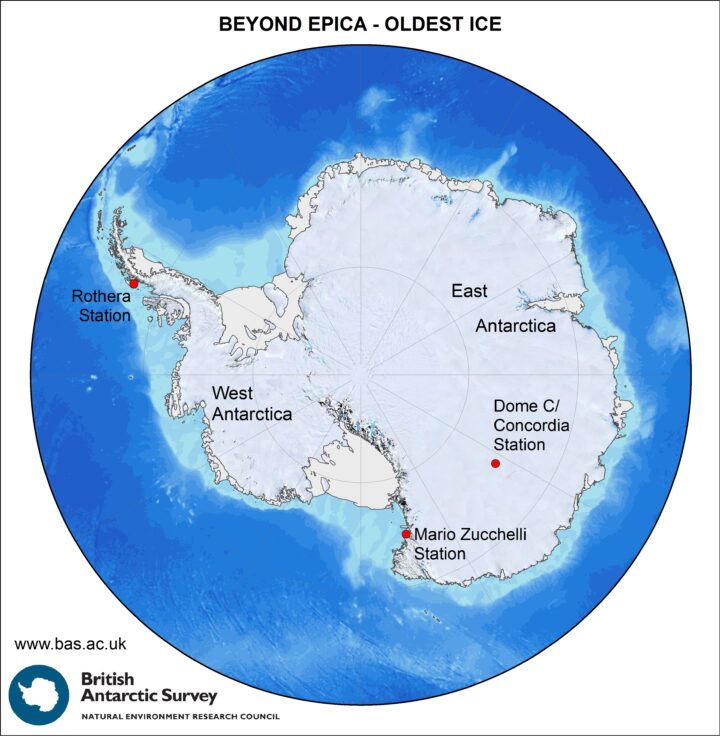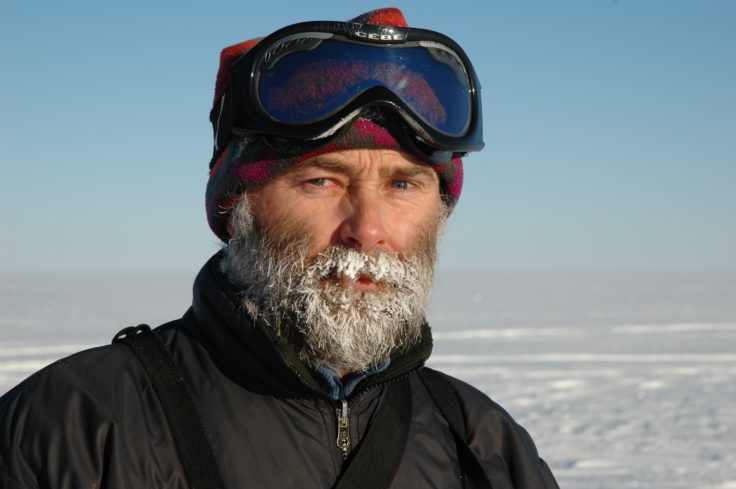Beyond EPICA deep drilling campaign begins
Scientists return to East Antarctica this month (December) to locate the oldest ice on Earth. The team is part of an EU-funded research consortium from 10 European countries whose aim is to drill an ice core to capture 1.5 million years of Earth’s climate history.
The project, Beyond EPICA – Oldest Ice, will answer important questions about big shifts in the past record of Earth’s climate.
The Little Dome C site has reopened for the second ice core drilling campaign of the international research project coordinated by the Institute of Polar Sciences of the CNR (National Research Council of Italy). By analysing the ice cores extracted from the deep ice in Antarctica, the project will collect information about the evolution of temperature, the composition of the atmosphere, and the carbon cycle.

The 15-person team, which includes Dr Robert Mulvaney from British Antarctic Survey (BAS), plans to start deep drilling to reach depths of a few hundred metres. Little Dome C is an area of 10 km2, located 35 km from the Italian-French Concordia Station — one of the most extreme places on the Earth. They will work for over two months on the Antarctic plateau at 3.200 metres above sea level, where the average summer temperature is -35°C. Over the next few years, the analysis of an ice core extracted from a depth of 2.7 km will enable the reconstruction of the world’s climate history, going back in time by 1.5 million years to discover information on temperature and on the concentration of greenhouse gases in the atmosphere.

“In the previous campaign, despite the prohibitive weather conditions, with gusts of wind and temperature almost always below -40°C, we set up a campsite that can host up to 15 people for a few months, as well as a complex drilling system,” says Carlo Barbante, director of the Institute of Polar Sciences of the National Research Council of Italy (CNR-ISP), who was on the ice in 2021/2022.
“Our starting point will be from 130 metres down, which is the depth we reached last year. This season we will conduct deep drilling. Our hope is to reach a depth of a few hundred metres by the end of January 2023.”
The climate and the environmental history of our planet is archived in the ice, which can reveal information from hundreds of millennia ago on the evolution of temperature and the composition of the atmosphere. Researchers will assess the content of greenhouse gases, such as methane and carbon dioxide, in the atmosphere of the past link these findings to how the temperature evolved.
Dr Robert Mulvaney, ice core scientist from British Antarctic Survey, the UK partner in Beyond EPICA – Oldest Ice, who is part of the team at Dome C explains:
“In the early 2000s we drilled an ice core from Antarctica that gave us a climate record going back 800,000 years. Now we want to double the length of that record to investigate an important shift in Earth’s climate around one million years ago, when the planet’s climate cycle between cold glacial conditions and warmer interludes changed from being dominated by a 41,000-year pattern to a 100,000 year cycle.”
Dr Mulvaney continues: “We need to understand the interaction between the Earth’s atmosphere and climate in very different conditions in the past if we are to be sure we can predict the future climate response to increasing greenhouse gases. There is no other place on Earth that retains such a long a record of the past atmosphere other than the Antarctic ice sheet, and it is tremendously exciting to be embarking now on the journey to recover this record.”
Members of the 2022/2023 team: Frank Wilhelms, Matthias Hüther, Gunther Lawer, Martin Leonhardt and Johannes Lemburg from the Alfred Wegener Institute (Germany), Robert Mulvaney from the British Antarctic Survey (UK), Julien Westhoff from the University of Copenhagen (Denmark), Romain Duphil from the University of Grenoble-Alpes (France), Romilly Harris Stuart from Laboratoire des Sciences du Climat et de l’Environnement and DEEPICE PhD candidate (France), Giuditta Celli from CNR – Istituto di Scienze Polari and PhD candidate at Ca’ Foscari University of Venice (Italy), Saverio Panichi, Michele Scalet and Andrea De Vito from ENEA — the Italian National Agency for New Technologies, Energy and Sustainable Economic Development (Italy). Markus Grimmer and Florian Krauss from the University of Bern (Switzerland) will provide support from the Concordia Station.
Discover more: https://www.beyondepica.eu/en/